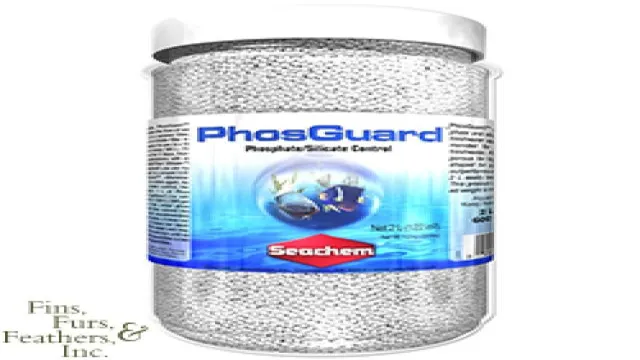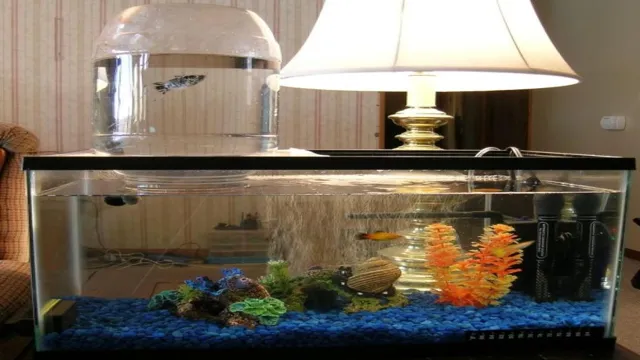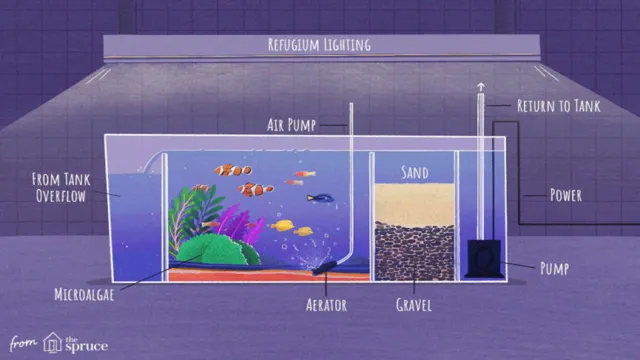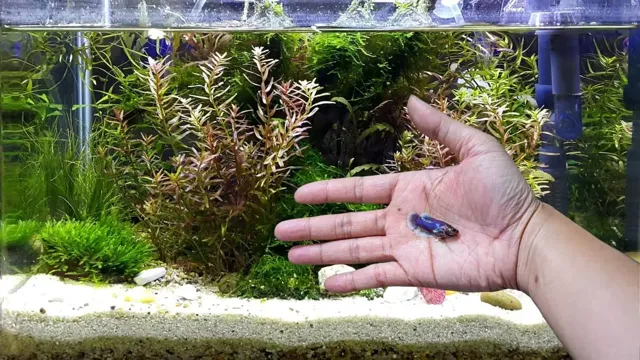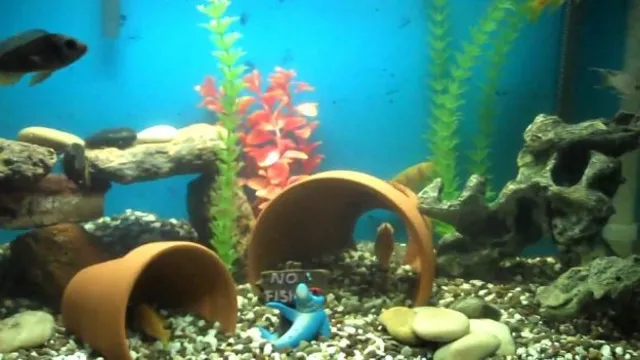As a python owner, you know how important it is to keep your aquarium clean. Not only does it keep your snake healthy, but it also ensures that you can properly observe their behavior and growth. However, the thought of cleaning an aquarium can be daunting, especially if you’re new to the game.
But fear not, with a little bit of know-how, you can have a sparkling clean tank in no time. In this article, we’ll tackle the ins and outs of cleaning your aquarium pythons to help you keep your pet happy and healthy. So grab your gloves and let’s dive in!
Gathering Supplies
If you’re looking to clean your aquarium python’s habitat, the first step is to gather all the necessary supplies. You’ll need a good quality aquarium-safe cleaner, a scraper or scrubber, a siphon, a bucket, and a new filter if needed. It’s important to select a cleaner that’s specially formulated for use in an aquarium.
Regular household cleaners can be toxic to aquatic life and could harm your python or other fish. Once you have your supplies ready, it’s time to get started on the cleaning process. It’s always a good idea to consult with a veterinarian or professional aquarist if you’re unsure about any part of the process or need guidance on how to proceed.
With the right tools and some helpful advice, you can make sure that your python’s tank stays clean and healthy.
What You’ll Need
When it comes to starting a new project, gathering supplies is a crucial step that shouldn’t be overlooked. The first thing you want to do is make a list of everything you’ll need. This could include tools, materials, and any other items necessary to complete the project.
Depending on the project, you may also need to consider things like safety equipment or specialized tools. Once you have your list, it’s time to start shopping. You can find supplies at a variety of locations, including hardware stores, craft stores, and online retailers.
When shopping, be sure to double-check your list to make sure you haven’t forgotten anything. In addition, consider purchasing a little extra of certain items, just in case. With all of your supplies gathered, you’ll be ready to jump into your project and get started.
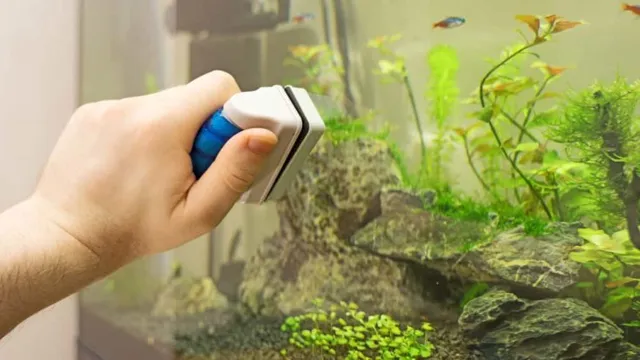
Setting Up the Cleaning Area
When setting up the cleaning area, it’s important to gather all the necessary supplies before starting. Make sure you have a broom, dustpan, mop, bucket, cleaning solution, gloves, and rags or paper towels on hand. Having everything in one spot will make the cleaning process more efficient and save time in the long run.
If you’re tackling a larger area, consider using a vacuum and carpet cleaner as well. Don’t forget to wear protective gear, such as gloves and a mask, if you’re cleaning with harsh chemicals. By taking the time to gather all the supplies you need, you’ll be able to clean with ease and effectiveness.
Cleaning the Aquarium
Cleaning your aquarium may seem like a daunting task, but it’s incredibly important for the health and well-being of your pet python. To start, you’ll need to remove your python from the tank so they don’t get stressed or injured while you clean. Next, you can drain the water from the tank and start scrubbing away any algae or gunk that has built up on the walls and decorations.
For tough spots, you can use a sponge or scraper to gently scrub away the grime. Make sure to rinse everything thoroughly with fresh water before refilling the tank and re-introducing your python. It’s also important to replace any filters or parts that may have become worn out or dirty.
By regularly cleaning your aquarium, you’ll help keep your python healthy and happy. So, don’t be afraid to dive in and get your hands wet! (See Also: How to Lift Up Aquarium Safely and Easily: Step-by-Step Guide)
Removing Your Python from the Aquarium
Cleaning the Aquarium – Removing Your Python If you have a python as a pet, then you need to clean its aquarium on a regular basis. This is important for keeping your python healthy and happy. Before you start cleaning, make sure to remove your python from the aquarium and place it in a safe and secure location.
Then, empty the old substrate from the aquarium and scrub the walls and floor with a safe, non-toxic cleaning solution. Once you have thoroughly cleaned the aquarium, rinse it out with water and let it dry completely before adding fresh substrate and returning your python to its home. Remember to clean your python’s water dish and any other accessories in the aquarium, such as climbing branches and hiding spots.
Keeping your python’s aquarium clean is an essential part of its overall care, and by following these simple steps, both you and your python can enjoy a clean and healthy living environment.
Draining the Water
When it comes to aquarium maintenance, cleaning the tank is an essential task to ensure the health and well-being of your aquatic pets. Draining the water is a critical step in the cleaning process as it allows you to remove any debris and dirt that may have accumulated at the bottom of the tank. Not only will draining the water make it easier for you to clean the tank thoroughly, but it will also provide an opportunity to check the water quality, which is crucial for the health of your fish.
Make sure that you remove all the water from the tank and use a gravel vacuum to suck up any waste and debris that may have collected on the floor of the tank. Once you have drained the water, you can start cleaning the tank with a mild detergent, scrubbing the interior, and rinsing it thoroughly with clean water. Remember to never clean the tank with soap or abrasive cleaners as they may harm your fish.
By following these steps, you can ensure that your aquarium remains clean and healthy for your fish to thrive.
Scrubbing the Aquarium
Cleaning an aquarium is an essential task to maintain the environment healthy for your aquatic pets. When it comes to scrubbing the aquarium, there are a few things you need to know. Firstly, you should remove your fish to a temporary tank, and then you can start cleaning the aquarium walls with a scrubber and warm water.
It’s important to avoid using soap or chemicals as they can be hazardous to your fish’s health. Next, change the water with fresh, dechlorinated water, and adjust it to the right temperature. Don’t forget to clean the substrate and decorations, as they can also accumulate debris and waste.
Lastly, it’s crucial to maintain a regular schedule for cleaning your aquarium, depending on the size of the tank and the number of fish. A well-kept aquarium is not only pleasing to the eye but can also increase the lifespan of your aquatic pets. So roll up your sleeves and start cleaning that aquarium with care and love for your fish!
Cleaning the Substrate
Cleaning the substrate is an essential task for maintaining the health and cleanliness of your aquarium. It involves removing any debris, uneaten food, and waste products from the substrate. This is important because decomposing matter can produce harmful toxins that can harm your fish and other aquatic life.
Substrate cleaning should be done regularly to prevent the accumulation of excess waste products. Begin by using a siphon to remove debris, taking care not to disturb the plants or the substrate itself. Gently run the siphon over the surface of the substrate, being careful not to remove too much of the substrate itself.
It’s also important to clean any decorations or rocks in the aquarium, as they can trap debris and waste. Use a gentle brush to scrub them clean and rinse them thoroughly before returning them to the aquarium. By regularly cleaning the substrate, you’ll help maintain a healthy and vibrant aquarium for your aquatic life to thrive in.
Sanitizing the Aquarium
Cleaning an aquarium for your pet python may seem like a daunting task, but it’s actually quite simple if you know what to do. Before cleaning the aquarium, you must first remove your python and place it somewhere safe and secure. Then, remove any objects such as rocks, plants, or hiding spots, and scrub them thoroughly with hot water and a gentle soap. (See Also: How to Clean Algae off Aquarium Filter: Tips and Techniques)
Using hot water and aquarium-safe cleaner, scrub the interior of the tank to remove any algae or dirt buildup. Once the tank is clean, rinse it thoroughly with clean water to remove any soap residue. Refill the tank with fresh water and add back any objects you removed earlier.
It’s crucial to sanitize the aquarium regularly to prevent the growth of harmful bacteria and maintain the health of your pet python. Remember to clean the tank at least once a month and change the water every week. Keeping the aquarium clean and well-maintained will ensure a healthy and happy home for your pet python.
Disinfecting the Aquarium
As a responsible aquarium owner, it’s crucial to keep your tank and aquatic creatures safe and healthy. One of the most important steps in maintaining a thriving aquarium is sanitizing it regularly. Disinfecting your aquarium helps keep harmful bacteria, viruses, and parasites at bay.
It also helps to prevent the spread of diseases that can be detrimental to your fish. There are various ways to disinfect your aquarium, including using hydrogen peroxide, bleach, or specialized aquarium disinfectants. It’s essential to follow the correct dosage and application instructions for whichever disinfectant you choose to use.
Remember to remove and clean all equipment, including ornaments, filters, and pumps. It’s also necessary to rinse and dry everything down thoroughly before returning it to the aquarium. Disinfecting your aquarium may seem like a daunting task, but it’s vital for the health and well-being of your aquatic pets.
Rinsing and Drying the Aquarium
Sanitizing the Aquarium: Rinsing and Drying After you’ve removed all the water and cleaning solution from your aquarium, it’s vital to thoroughly rinse it to remove any leftover debris or chemicals. You don’t want any residue to remain in the tank as it can harm aquatic life. Start by using cold water to rinse the entire tank, filling it up a few inches at a time.
Be sure to rinse all accessories, such as rocks or decorations that will be returned to the tank, and ensure that they are free of debris. Refrain from using soap or any other cleaning solutions during this process. Once you are confident that the aquarium is free of chemical residues, it’s time to dry it.
Use a clean, dry cloth or towel to wipe the aquarium down thoroughly. Be sure to get any hard-to-reach areas, including corners and seams. Allow the aquarium to air dry for a few hours, make sure all surfaces are completely dry before setting it up again.
Remember that the process of sanitizing and rinsing the aquarium is crucial to the health and well-being of your aquatic friends. By taking the time to ensure that the tank is thoroughly dry before reintroducing water and fish, you’ll avoid harmful bacteria and algae growth that can threaten your fish.
Returning Your Python to the Aquarium
Keeping an aquarium python as a pet comes with a lot of perks, but it also means taking proper care of your pet to ensure its health and longevity. One of the crucial steps in this care routine is cleaning the aquarium and returning your python to a clean and safe environment afterward. Cleaning an aquarium python’s tank involves removing any debris and waste from the water, cleaning the tank’s interior, and replacing the water with fresh and clean water.
You can use a siphon or a turkey baster to remove the debris from the water, scrub the walls, hide box, decorations, and other interior fixtures with an algae scraper, and rinse everything thoroughly. Once you have cleaned the tank, it’s time to return your python to the aquarium and observe that it is comfortable and healthy in the clean environment you have provided. Cleaning the aquarium periodically is essential for your python’s well-being, as dirty water can host harmful bacteria that can cause illnesses if not taken care of.
Therefore, make sure to clean the tank thoroughly and frequently to keep your python safe and healthy, and enjoy the rewarding experience of having such a beautiful pet. (See Also: How to Keep Your Aquarium Fish Healthy: Tips and Tricks for Optimal Health)
Conclusion
In conclusion, cleaning your aquarium python is essential for their overall health and wellbeing. It’s important to create a routine for cleaning and maintenance, ensuring that their habitat remains safe and sanitary. And remember, just like any other pet, a little love and attention goes a long way.
So get your scrub brush ready, put on some tunes, and give your scaly friend the spa day they deserve. Remember, a clean python is a happy python!”
FAQs
How often should I clean my aquarium if I have a pet python?
It is recommended to clean your aquarium once a week if you have a pet python. This will help maintain a healthy and clean environment for your pet.
What cleaning supplies should I use to clean my aquarium with a python?
You will need an aquarium scraper, algae scrubber, siphon hose, and a bucket. You can also use specialized cleaning products that are safe for aquatic animals.
Can I use household cleaners to clean my aquarium with a python?
No, you should never use household cleaners in your aquarium as they are toxic to aquatic animals. Always use products that are specifically designed for cleaning aquariums.
How do I remove algae from my aquarium without harming my python?
You can remove algae using a scraper or algae scrubber. Be gentle when cleaning around your python and avoid using any harsh chemicals.
What is the best way to clean the gravel in my aquarium with a python?
Use a siphon hose to vacuum the gravel while removing debris and waste. Be careful not to disturb your python while cleaning.
How can I maintain a clean and healthy environment for my python in the aquarium?
Regular cleaning is key to maintaining a healthy environment for your python. Make sure to monitor the water temperature, pH level, and other important water parameters to ensure a safe and comfortable living space.
Can I clean my aquarium while my python is still inside?
It is best to remove your python from the aquarium while cleaning to avoid stressing them out or harming them accidentally.


